Evidence for Nursing: Assessment 2 - Research Concepts and EBP
VerifiedAdded on 2022/07/28
|5
|923
|17
Homework Assignment
AI Summary
This assignment solution addresses key concepts in evidence-based practice (EBP) within the nursing profession. It begins by defining the role of EBP according to the Registered Nurse Standards for Practice and explores how the EBP model enhances clinical decision-making. The solution then delves into the importance of patient values and preferences in EBP, providing an illustrative example. Furthermore, it identifies barriers and enablers to EBP implementation in clinical settings, drawing on personal clinical experiences, and explains the significance of randomized controlled trials. The second part of the assignment critically appraises a study on music therapy for depression, evaluating its strengths and weaknesses using the CASP framework. The solution interprets the study's results, determining the effectiveness of music therapy and providing a recommendation for its use, considering benefits, harms, and costs. This comprehensive analysis demonstrates a strong understanding of research principles and their application to nursing practice.
1 out of 5
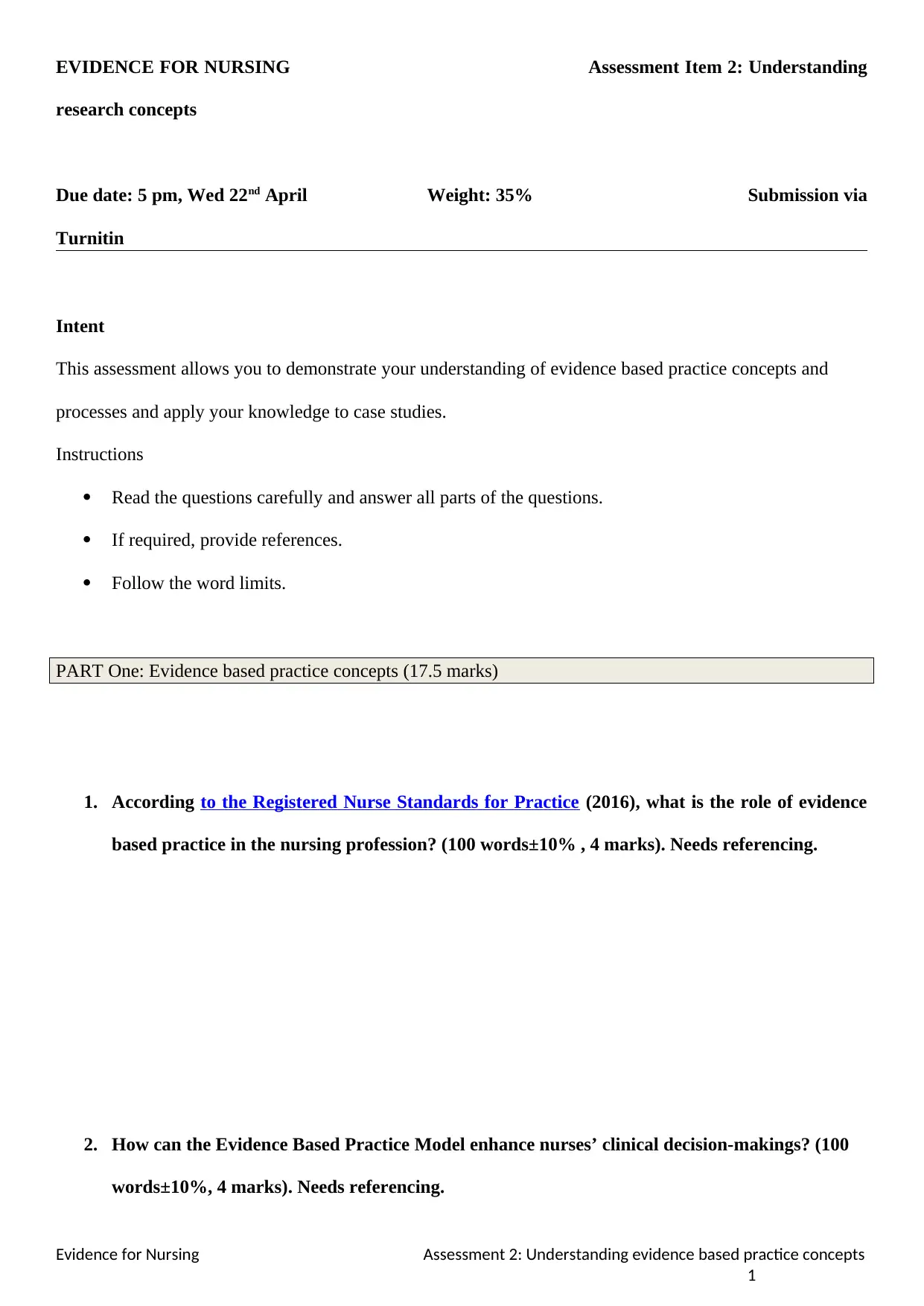
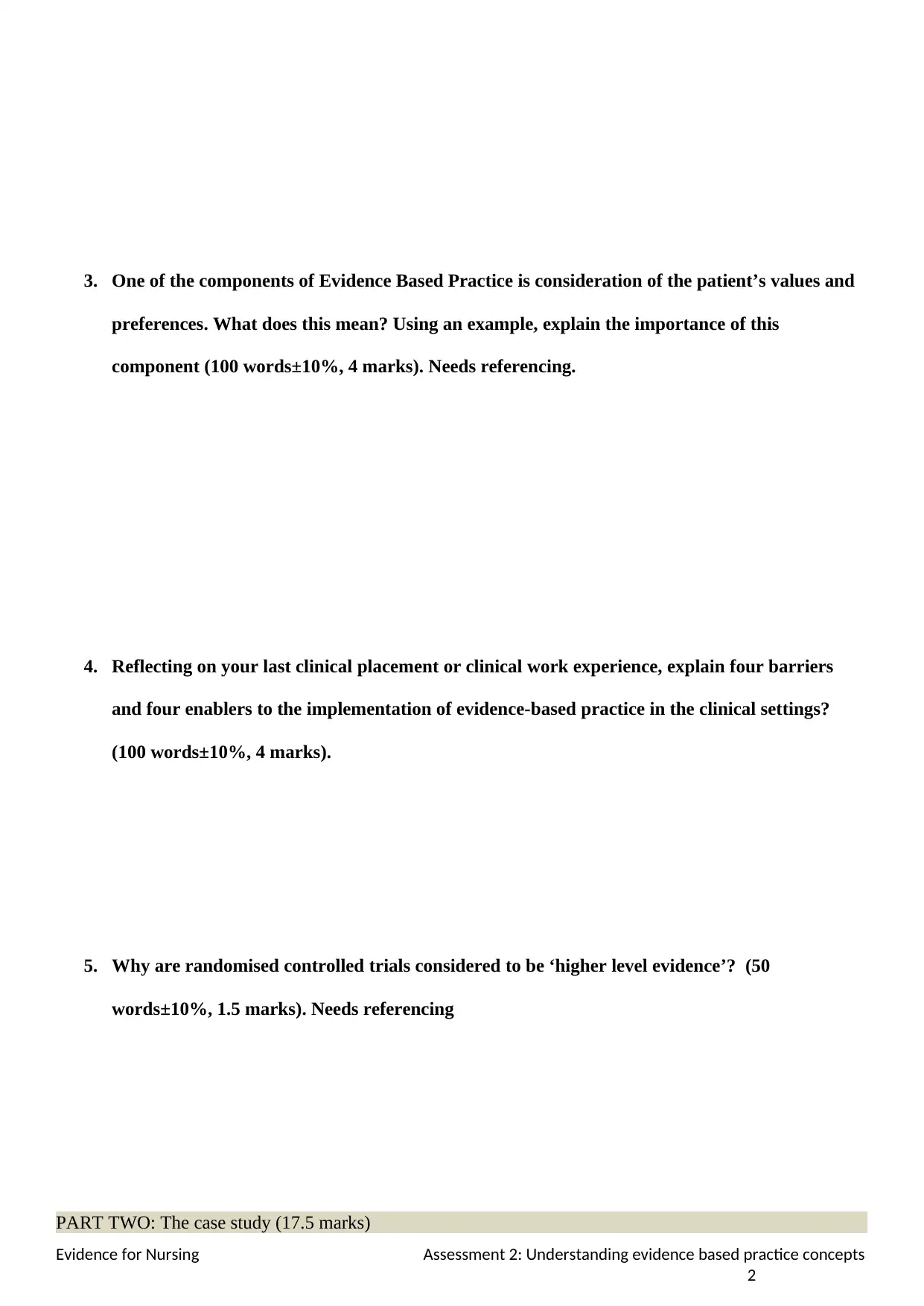
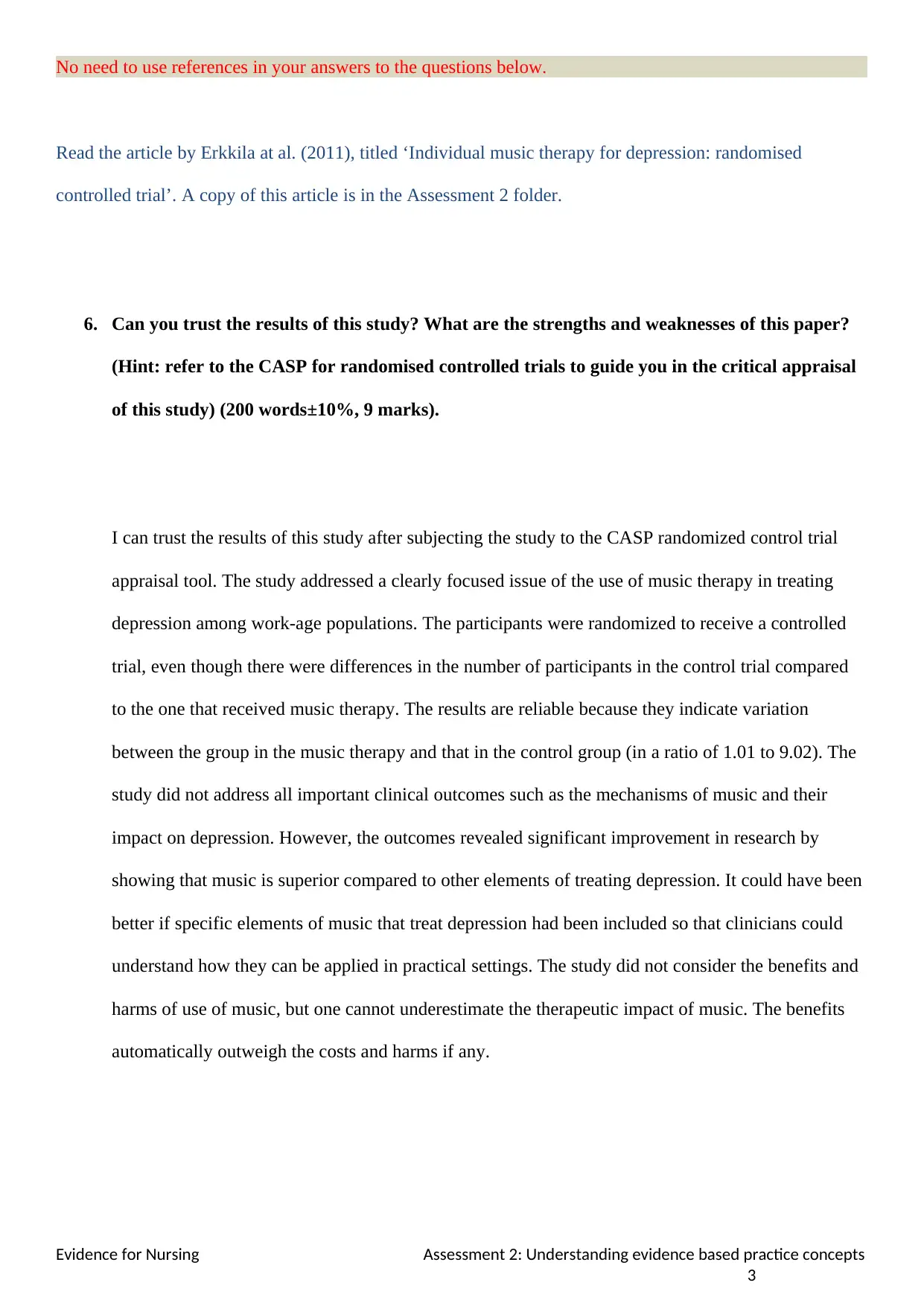

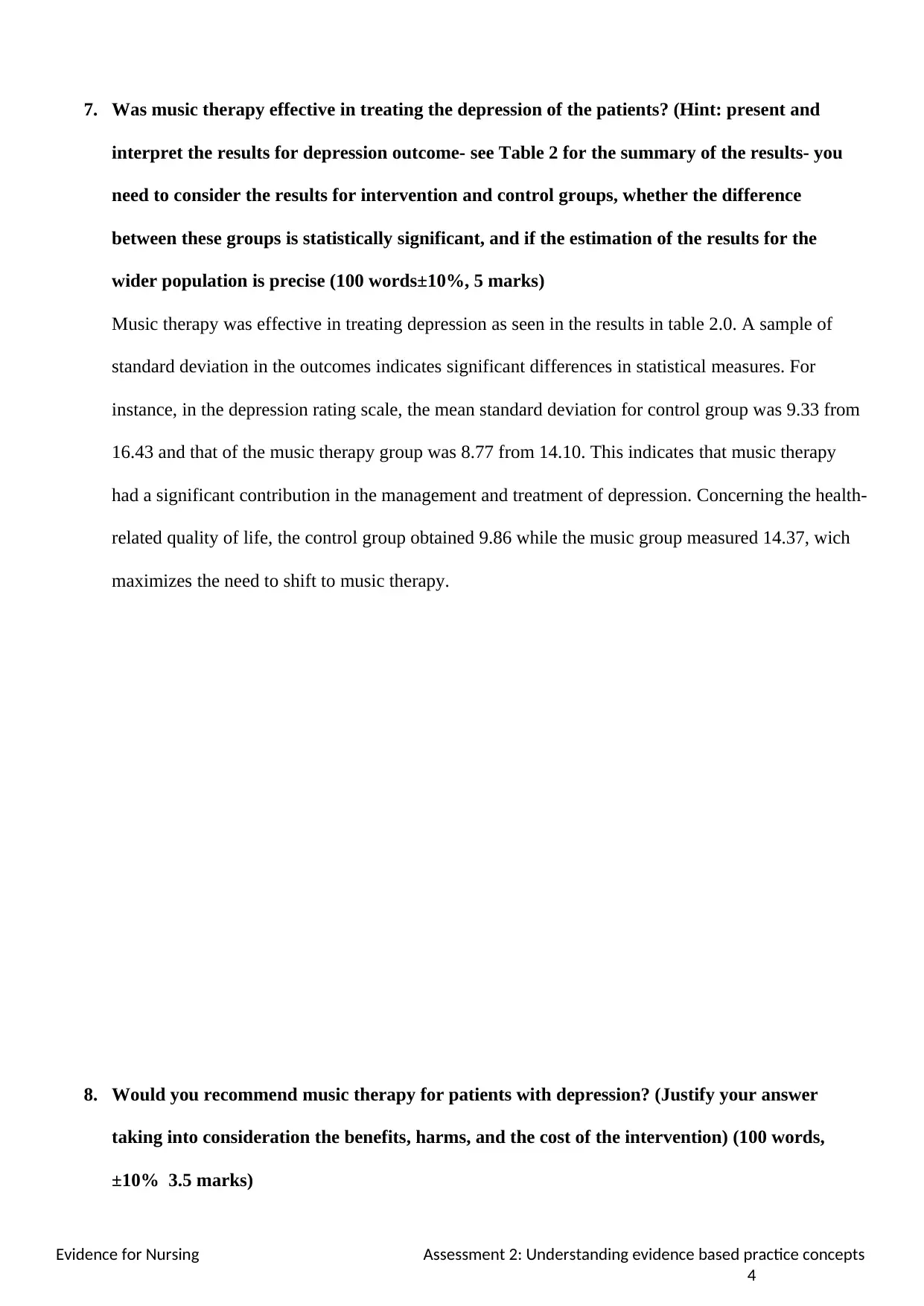
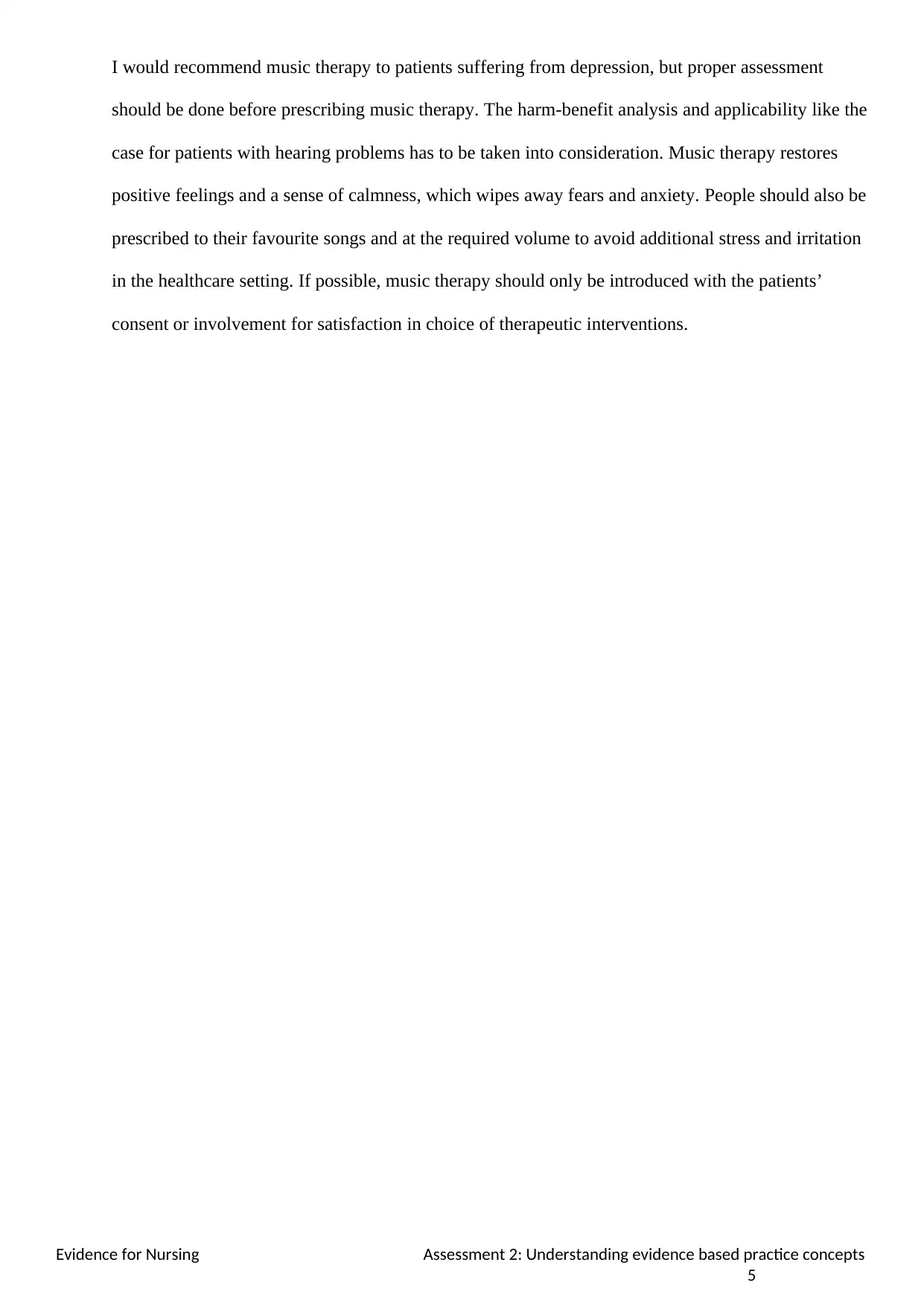






![[object Object]](/_next/static/media/star-bottom.7253800d.svg)